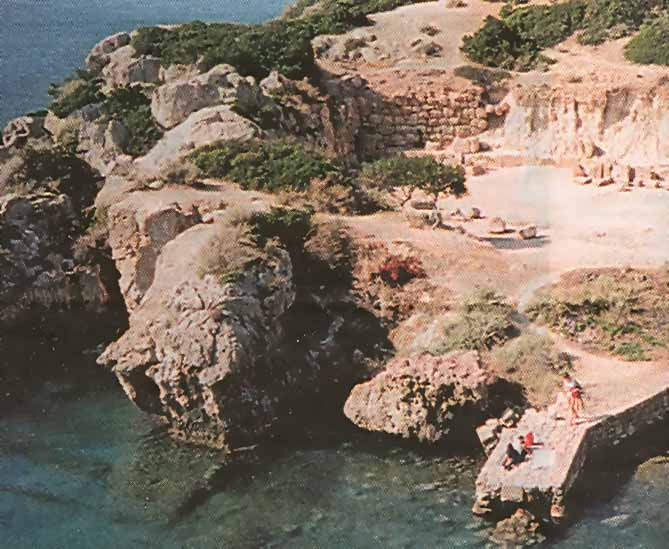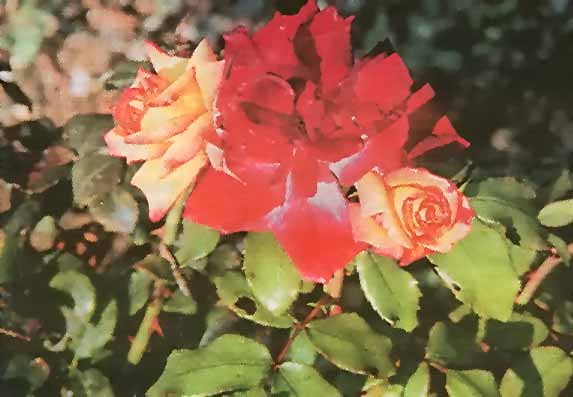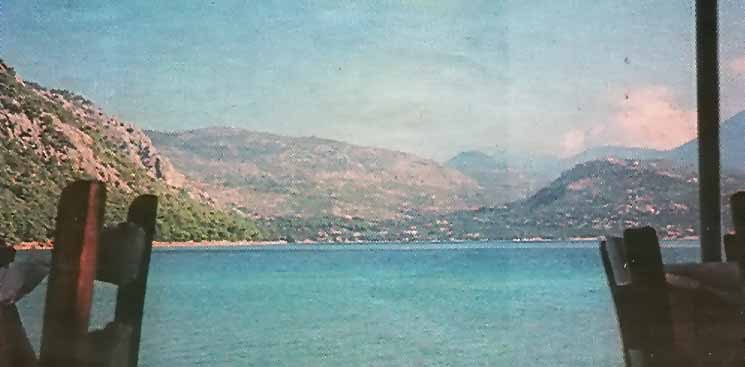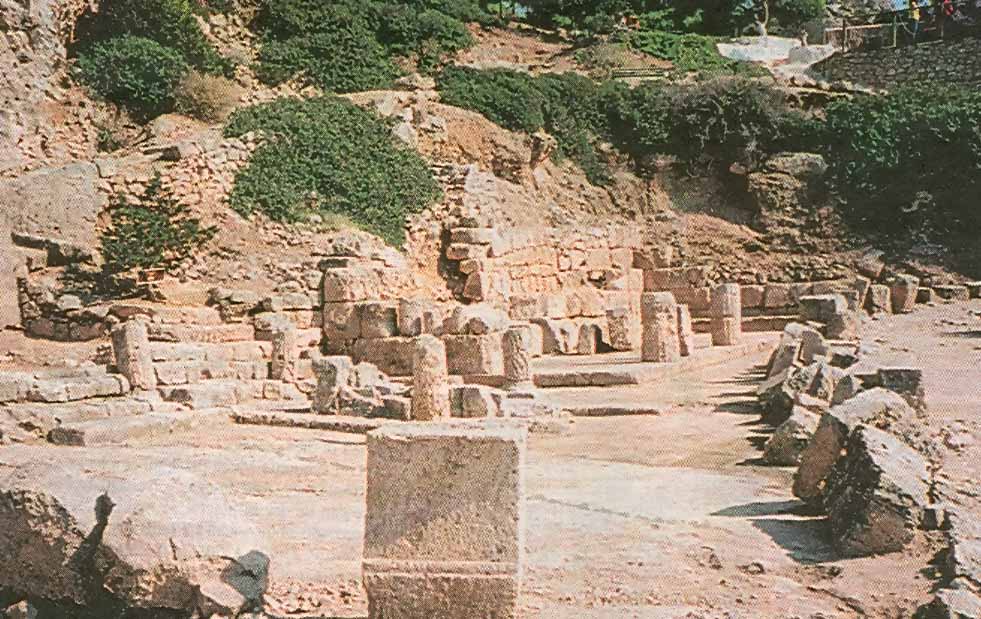 |
||
|
|
||
|
By Diana-Farr Louis |
||
| The ancient Corinthians called it the Land Beyond the Sea. Today's Athenians driving west to the Isthmus might call it the Land Beyond Loutraki, the spa/casino town nearby.Perahora, the pine-tufted promontory that slices into the Gulf of Corinth at the foot of Mt Gerania, has always been more outback than mainstream. Its shrines to Hera last saw worshippers more than two thouand years ago. Between then and 1930, when a young British archaeologist started excavating there, Perahora both the region and its village must have changed very little. Even now it is still behind the times. |
 This classical cistern resembles the foundations for a Byzantine chapel |
|
|
But without Humfry Payne and his wife Dilys Powell, Perahora would be even more remote. His discoveries and her delightful books about the people put the place on the map, and assured it a paragraph or two in most guides. You don't have to have read An Affair of the Heart before you go, but it helps. Powell, who went on to become one of Britain's most distinguished film critics, wrote it in 1958 after the last of her three postwar visits in 1954. Her observations, conversations and embarrassments must strike a familiar note for any expat who has loved Greece without being word-perfect in the language. |
||
|
muletrack or a "faint and stony path along the shore". The Blue Guide recommends it as a "delightful cliff path about 3 hours from Loutraki", but we slothfully chose to drive. |
 The tiny harbour at Perahora, an open space that was once a busy meeting/shopping area (agora), now a classic Greek jewel |
|
|
Suddenly a gaggle of new ugly buildings signals our arrival at Perahora. An earthquake in 1981 destroyed Dilys Powell's village, but in any case, even in her day, it "was a mound of powdery houses... all muddle to the eye... In summer, when dryness devours the earth and casts the debris of drought over everything living and dead, the houses with their broken tile roofs, with the mudbricks exposed where the pale-washed stucco has fallen away, make from a distance the impression of a greyish-yellow rubbish-heap." In fact, there is the distinct possibility that the village might be a tad more presentable now, but at first glance and without knowing any of her kind and hospitable acquaintances or their descendants, there is no reason to stop. Between the village and the antiquities, though, there lies an ' unexpected bonus-lake, another Vouliagmeni. It looks like Switzerland, green and wooded, placid and unruffled." |
||
|
A few more minutes the car brings us to the end of the road and a flat parking area that already has several cars on this October Saturday. From here you can either climb up to the lighthouse or take the shorter walk to the ruins. Powell often went to the lighthouse and considered its solitary keepers among her closest Perahoran friends. Although unmanned now, the view is stupendous: the white blur of Corinth crouching beneath the hulk of Acrocorinth with Mt Ziria/Kyllini looming over both to the left; the Gulf stretching but ahead, blue as far as the eye can see; and more mountains, Helikon and Parnassos, to the right. But save it for after you've inspected the site. |
|
|
|
In fact, there isn't much to see: a long flat clearing that looks hewn out of the cliff face, some uneven masonry, stubby columns, the long arm of a stone jetty. But as I caught sight of it from the chapel/guardhouse above, I felt bewitched. The combination of the pale-white earth, the scattered patches of green skimming over grey rocks, and the peacock sea where some lucky souls were bathing seemed magical: I could not drag my eyes away. |
||
| On the upper half of the site, away from the sea, Payne's team discovered another temple to Hera (Limenia or of the harbour), roads, houses, watchtowers and diverse buildings spanning several eras, ending with the Hellenistic. Here, the most interesting ruins have to do with water supply. One is a twin-apsed cistern, which looks more like a sunken Byzantine church than a water repository. The other is a multichambered fountain, lavishly camouflaged by caper bushes. |
 The Damianos Foundation has the largest rose collection in Greece |
|
| The lack of springs was one reason why a major town never grew up around the sanctuary. In today's warm sun, the hillside basks in the "drowsy scent of pines", which Powell said summed up "the essence of [her] feeling for Greece". If only we could have been there to see what lay buried with these rather skimpy vestiges. As Powell says, ''it was the amassing, season after season, of beautiful and precious small objects, gifts offered to the goddess Hera in gratitude for favours or in entreaty for help, which brought distinction to the Perahora expedition. Little bronze statuettes... ivory seals; ivory pins,... jewellery and scarabs, hundreds of bronze bowls, hundreds of terracotta figurines, fragments of exquisitely painted pottery to be counted not in hundreds but in hundreds of thousands - only the most famous sanctuaries had yielded so much miniature treasure." Sadly, none of this treasure remained at Perahora. The villagers watched in dismay as caiques loaded to the gills sailed off to Athens, where some of the finds can be seen in the National Archaeological Museum but most have vanished into its storerooms. From the start the villagers dreamt of bringing the treasure back, of founding their own museum to house it. Surely it would act as a magnet, pulling in visitors to rival Mycenae, Olympia and Delphi. Eventually they did manage to erect not one but two small buildings in the village and on the site - but Athens wasn't listening and both are locked and empty. So one has to make do with plans and photographs displayed on posterboards around the little church/guard house. Written in quaint English, they add their own colour to the site. For example, regarding the agueduct (of which barely a trace exists): "It was the height of the technical ability and inventiveness of the citizens of the Heraeum-Perahom during the Classical Period, which irritates the synchronous admiration." More poignant is the tribute to Humfry Payne, 1902-1936, who died tragically from a staphylococcus infection after minor surgery. "He discovered the Heraeum when he was only 28 years old. The youngest principal of the English Archaeological School was a unique mystic of the Corinthian Art. He died before he complet (sic) his discovery when he was 34 years old. He asked to be buried to Mycenae. He used to say that 'Perahora is my heart.' Perahora owes its universal fame to him." When he died, Dilys Powell returned to England. She married again, started reviewing films and did not come back to Greece until after the war. Not only did "a jungle of time separate the 1930s digs and postwar Greece", but also she felt as if her "relationship with Greece had been through an interpreter". |
||
|
On her three visits, in 1945, '53 and '54, Powell had to rediscover Greece for herself. Wherever she went, she found changes, among both her Kolonaki English-speaking friends and her less sophisticated village acquaintances in Perahora, Mycenae and elsewhere. Speaking elementary Greek, she often missed nuances and sometimes found herself in trouble as a result. But her keen eye noticed the sears of deprivation, the volatile politics (whether anti-British or pro- or anti-Communist) and the generosity that invariably greeted her arrival anywhere. |
 Lake Vouliagmeni, not what you'd expect of a rocky peninsula |
|
|
How to get there Take the national road to the Isthmus, bear right for Loutraki and follow the signs for Perahora/Heraion (ca 14km). To return a different way, go through Perahora to Schinos and Alepohori, and on to Megara, where you rejoin the motorway. At Schinos, do stop for a look at the Damianos Foundation's Centre for Hellenism. Set up to educate diaspora children about the various threads of Greek culture, it happens to have an astounding collection of rose bushes. With 500 species, it is the largest in Greece Where to eat Alas, our meal at Lake Vouliagmeni was not recommendable, but that doesn't mean you won't be luckier. Try the taverna that looks the most popular; the food may be better than the service. Note to swimmers The Blue Guide warns against venturing outside the cove because of dangerous currents and... sharks! The lake, however, is completely safe, clean and refreshing An Affair of the Heart, originally published in 1958, was reprinted by Efstathiades Publishers in 1983 and in 1999 by Souvenir Press. Both are available from Internet bookshops if you don't find a copy in Athens |
||
(Posting date 15 May 2006) HCS readers can view other excellent articles by this writer in the News & Issues and other sections of our extensive, permanent archives at the URL http://www.helleniccomserve.com./contents.html
All articles of Athens News appearing on HCS have been reprinted with permission. |
||
|
||
|
2000 © Hellenic Communication Service, L.L.C. All Rights Reserved. http://www.HellenicComServe.com |
||


